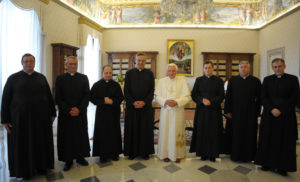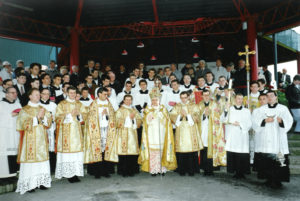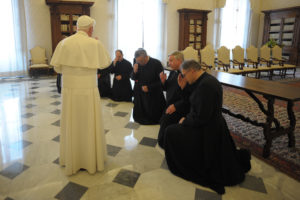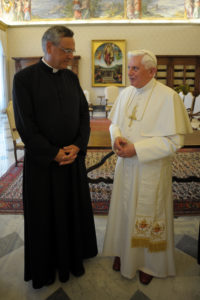Carry the Cross: Mission Tradition
During Lent, the FSSP’s Mission Tradition is giving all of us a special opportunity to Help Carry the Cross. Like Simon of Cyrene, we can shoulder some of the burdens of our FSSP family not only here but also around the world, confident in Our Lord’s words that “as long as you did it to one of these my least brethren, you did it to me.”
Throughout the season Mission Tradition is featuring special blog posts, photos, and updates from our missionary apostolates in Mexico, Colombia, and Nigeria.
If you feel called to give to Mission Tradition, please know that the money will go directly to the FSSP’s poorest apostolates. Our missionary priests have to regularly deal with food availability, basic education, shelter, medical hardships, and other issues that we don’t see as much in the U.S. and Canada. But the spiritual battle is the same–to advance the Kingdom of God on earth with every weapon that the Church’s traditions give us, particularly the ancient but ever-new Holy Sacrifice of the Mass.
We encourage you to visit Mission Tradition’s website and experience how the love of the ancient liturgy and the love of neighbor harmoniously fuse in the FSSP’s mission apostolates.
You don’t need to read the headlines to know that it’s getting harder and harder for families to meet their own needs, let alone the ones of families across the world.
But Lent helps remind us that God’s gifts are not supposed to be just given from wealth. They are also to be shared in poverty. In this part of the world, we have been blessed for so long that we perhaps have lost sight of the hospitality practiced elsewhere: that however much or however little we have is shared by the entire family.
Please pray for our priests and all our apostolates throughout Lent, and may God bless you and the missions of the FSSP.
February 23, 2023

Webinar Today: St. John Bosco Camp Application Launch
From Fr. Joseph Dalimata, FSSP at St. John Bosco Camps:
We know that you are as excited as we are about our new program SURSUM CORDA, Camp St. Isaac Jogues and this year’s TWO sessions of Camp St. Peter.
SJBC and our supporters have been working hard to give your boys a place for joy-filled formation, a place where they can become men of the Church. We have a lot to tell you about our plans.
That is why we are inviting you to join our Camp Application Launch Webinar on February 20th at 5:30 MST (7:30 PM EST).
On this webinar you will get to:
- Hear from our seminarian directors.
- Listen to the testimony of camp parents.
- Learn about how to apply.
- Get an update from the SJBC development team on our Capital Campaign: BUILDING ON ROCK, and our plan for a permanent home.
- Hear from Father Dalimata, FSSP, about the vision of SJBC and why we need your continued support and help to continue to improve and expand.
We will be opening applications after this webinar, so be sure to join us!
https://us06web.zoom.us/webinar/register/WN_j8JEpj18QPeEe9wVRXKrlQ
February 20, 2023

The Mass of the Flight into Egypt
by Fr. William Rock, FSSP
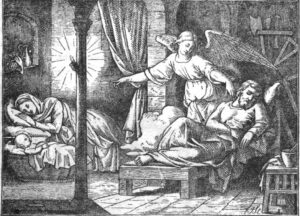
In editions preceding the 1962 edition of the Roman Missal, in the section for Masses for particular places (Missæ Pro Aliquibus Locis), listed for February 17th, is the Mass of the Flight of Our Lord Jesus Christ into Egypt (Fugæ D.N. Jesu Christi in Ægyptum). Although the Holy Family’s flight into Egypt is recounted in the Gospel of Matthew, information must be supplied from the Gospel of Luke to have a clearer picture of the events of the Divine Childhood. For Matthew’s Gospel, while it does narrate the visit of the Magi and the Flight into Egypt, does not mention Our Lord’s Presentation in the Temple. Taking this into account, the Flight into Egypt must have occurred after the Presentation in the Temple in Jerusalem, that is, after February 2nd. According to some interpreters, such as Cornelius a Lapide, it was the hearing of news of the excitement caused during Our Lord’s Presentation which roused King Herod, recalling the visit of the Magi and their failure to return to him, to action. As such, observing the Flight into Egypt on February 17th, fifteen days after the Presentation, agrees with this timeline.
The Introit, or entrance chant, of this Mass is taken from the beginning of the Gospel account of the Flight (Mat 2:13) and the Psalm Verse is Ps 54:8:1
An angel of the Lord appeared in sleep to Joseph, saying: Arise, and take the child and his mother, and fly into Egypt. (T.P. Alleluia, alleluia.) Ps. Lo, I have gone far off flying away; and I abode in the wilderness. Glory Be… An angel….
The Psalms are often interpreted as speaking for the New David Who is to Come. As such, the words of Psalm 54 used in the Introit can be seen as being “spoken” by Our Lord as He flees into Egypt.
The Collect (opening prayer) is as follows:
O God, the Protector of those who hope/trust in Thee, Who willed that Your Only-begotten Son, Our Redeemer, be rescued from the sword of Herod by the flight into Egypt: grant to us, your servants, through the intercession of the Most Blessed Ever-Virgin Mary, His Mother, that, freed from all dangers of mind and body, we may merit to arrive at our heavenly fatherland. Through the same Our Lord…
Protéctor in te sperántium, Deus, qui Unigénitum tuum, Redemptórem nostrum, ex Heródis gladio fuga in Ægýptum erípere voluísti: concede nobis fámulis tuis, beatíssima semper Vírgine, ejus Matre María, intercedénte; ut, ab omnibus mentis et córporis perículis liberáti, ad coeléstem pátriam perveníre mereámur. Per eúndem Dóminum nostrum…
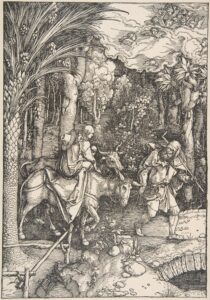
The first part of the oration makes it clear that the Flight into Egypt was part of the Divine Plan of the Father. It was not something which happened by chance or by accident. God protects those who hope and trust in Him, even, if at the time, things seem dark and confusing. The second part of the oration asks for God’s aid, through the intercession of the Blessed Virgin Mary, so that the faithful may arrive at their heavenly homeland, mirroring the Flight into Egypt. Just as God watched over the Holy Family during their flight into exile, may He watch over the faithful as they make their way from this land of exile to their true home.
The Epistle is taken from the Prophet Isaiah (Is 19:20-22):
In those days: they shall cry to the Lord because of the oppressor, and He shall send them a Saviour and a defender to deliver them. And the Lord shall be known by Egypt, and the Egyptians shall know the Lord in that day, and shall worship Him with sacrifices and offerings: and they shall make vows to the Lord, and perform them. And the Lord shall strike Egypt with a scourge, and shall heal it, and they shall return to the Lord, and He shall be pacified towards them, and heal them, the Lord, Our God.
This Epistle was no doubt chosen in reference to the tradition that during His time in Egypt, that country was shaken by Our Lord’s presence there. Answering why the Holy Family was directed to flee into Egypt, a Lapide relates the following in his commentary:
Because Egypt was full of idols and superstitions. They worshipped dogs, crocodiles, cats, calves, rams, goats, and what not. Christ entered into Egypt that He might cleanse it from this filthiness, and consecrate it to the true God. Listen to S. Leo (Serm. 2 de Epiph.): “Then also the Saviour was brought to Egypt, in order that a nation given up to ancient errors might now be signed for salvation nigh to come, for hidden grace, and that she which had not yet cast out superstition from her mind might receive truth as her guest.” Whence also Isaiah prophesies mystically of the same thing (xix. 1), saying: “Behold the Lord shall ascend upon a light cloud [the Blessed Virgin], and shall enter into Egypt, and all the idols of Egypt shall be moved at his presence.” And so S. Jerome and others relate that the idols of Egypt did, in truth, fall down when Christ came into it.
He also adds:
It cannot be doubtful that when the Egyptians saw the sanctity of the Blessed Virgin and Joseph, and had had frequent opportunities of converse and intercourse with them, they came to know, worship, and love the true God.
Who arose, and took the child and his mother by night, (mark his prompt obedience) and retired into Egypt—that Christ might sanctify and bless it by His coming. Hence faith and sanctity so flourished in Egypt that it produced the Pauls, the Antonys, the Macarii, and those crowds of monks and anchorites who emulated the life of angels upon earth, as is seen in Eusebius, S. Jerome, Palladius, S. Athanasius, and the lives of the Fathers. Whence S. Chrysostom, in loc., says, that Christ converted Egypt into a paradise. “Heaven does not shine so brightly with the various choirs of the stars as Egypt is illuminated by its innumerable habitations of monks and virgins.” And Trismegistus, quoted by S. Austin (lib. 8, de Civ. Dei, c. 14), says, “Egypt is an image of Heaven, and the temple of the whole world.”
The Gradual is again taken from the Psalms (Ps: 90:11-12), describing how the Angels watched over the Christ Child during His journey and stay in Egypt:
For He hath given His angels charge over thee; to keep thee in all thy ways. In their hands they shall bear thee up: lest thou dash thy foot against a stone.
The Alleluia again quotes from the Gospel of Matthew the Angel’s message to Joseph as in the Introit (2:13). If February 17th occurs after Septuagesima, a Tract, quoting the same text as the Alleluia, replaces it. The Missal also provides a Paschal Alleluia to be used in Masses said during the Easter season, which again quotes Matthew 2:13.
The Gospel recounts the message of the Angel to St. Joseph in his dream and the Holy Family’s fleeing into Egypt (Mat 2:13-15).
The Offertory is taken from the second half of the Epistle just read (Is 19:21).
The Secret (prayer over the offerings) reads as follows:
We immolate/sacrifice victims/hosts of praise to You, O Lord, humbly praying/asking that, You, Who willed, as an exile, to be carried in Egypt with your Mother, the Most Blessed Virgin Mary, by the intercession of same Blessed Virgin, would kindly lead us exiles to our heavenly fatherland: You Who lives and reigns…
Laudis tibi, Dómine, hóstias immolámus, supplíciter deprecántes ut, qui cum beatíssima Matre Vírgine María in Ægýptum exsul deférri voluísti; éxsules nos, eádem beáta Vírgine intercedénte, ad coeléstem pátriam benígnus perdúcas: Qui vivis et regnas…
This prayer, addressing Our Lord as an exile, asked of Him that same which was asked of the Father in the Collect. The beginning of this oration uses a formula commonly used among the Secrets.
The Missal indicates that the Preface of the Nativity, or the Christmas Preface, is to be used when this Mass is prayed. The use of this preface is fitting as the Mass commemorates an event of Our Lord’s childhood, one which occurred not that long after His birth.
The Communion is taken from the end of the Gospel (Mat 2:14-15):
And he was there until the death of Herod: that it might be fulfilled which the Lord spoke by the prophet, saying: Out of Egypt have I called my son.
a Lapide, again answering why the Holy Family was directed to Egypt, wrote:
Because Abraham, Isaac, and Jacob, and all the children of Israel, from whom Christ was sprung, dwelt in Egypt for four hundred years, and were called forth from thence by God, by the hand of Moses. And this was a type of the calling back of Christ out of Egypt, as S. Matthew adds, That it might be fulfilled which was spoken of The Lord by The prophet (Hosea xi.) saying, Out of Egypt have I called my son. Especially because the Hebrews were delivered out of Egypt by the blood of the Paschal Lamb, which was a type of Christ. “That not without that region the sacrament of the one only Victim might be prepared, in which first the safe-giving sign of the slaying of the Lamb, and the Passover of the Lord, had been prefigured,” says S. Leo. (Serm. 3 de Epiph.)
The Postcommunion is as follows:
Grant to our minds, almighty God: that, through the temporal flight of Your Son, which these venerable mysteries testify, we may have confidence that You have given us eternal life. Through the same Lord…
Largíre sénsibus nostris, omnípotens Deus: ut per temporálem Fílii tui fugam, quam mystéria veneránda testántur vitam te nobis dedísse perpétuam confidámus. Per eúndem Dóminum…
This Postcommunion follows the Postcommunion for the Wednesday of Holy Week which reads:
Grant to our minds, almighty God: that, through the temporal death of Your Son, which these venerable mysteries testify, we may have confidence that You have given us eternal life. Through the same Lord…
Largíre sénsibus nostris, omnípotens Deus: ut, per temporálem Fílii tui mortem, quam mystéria veneránda testántur, vitam te nobis dedísse perpétuam confidámus. Per eúndem Dóminum…
Both are fitting Postcommunions, as the Holy Eucharist just received is “a pledge of future glory” and of eternal life.2
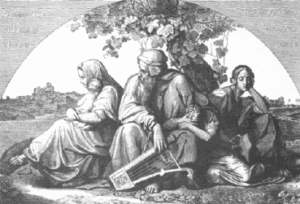
This Mass, with its themes of exile and asking God to guide us to our true fatherland, is well fitted for the time of Septuagesima, in which or near which February 17th will always fall. For liturgical commentators,3 the season of Septuagesima, which comes from the Latin for 70, brings to mind the Babylon Captivity of the Jews which lasted 70 years and invites the faithful to reflect upon their own exile from both the earthly and heavenly paradises due to sin. May we follow, especially during the season of Septuagesima, the lesson given to us by the exile Christ, for “Christ fled into Egypt that He might teach us to despise exile, and that we, as pilgrims and exiles on the earth, might pant after and strive for heaven as our true country” (a Lapide).
William Rock, FSSP was ordained in the fall of 2019 and is currently assigned to Regina Caeli Parish in Houston, TX.
- The Propers of the Mass were taken from this edition of the Roman Missal.
- Magnificat Antiphon for Second Vespers of the Feast of Corpus Christi.
- Guéranger, Prosper. The Liturgical Year, 4 (Septuagesima). Trans. Shepherd, Laurence. (Fitzwilliam: Loreto Publications, 2000), pp. 6-11.
February 17, 2023

Memories of Howard Walsh
We were grieved last month to hear of the passing of Howard Walsh, a great friend of the FSSP and a longtime parishioner of Our Lady of Fatima apostolate in Pequannock, New Jersey.
Beginning in 1994, Howard Walsh served for many years on the Fraternity’s Board of advisors. He was known to us not only as a benefactor but also as a vigorous promoter of our beloved traditions of the Church. Through publishing Latin Mass Magazine and running the website keepthefaith.org, he was a great champion of the faith and made many recordings and other information available to the Catholic world, at a time when such things were hard to come by.
Now that we have had more time to reflect on his extraordinary life and his support for our charism, we wanted to share with our readers some additional thoughts from our confreres in the FSSP.
Every once in a while, one meets someone with a sincere ardor for the Faith, an uncompromising love of family and selfless generosity to neighbor–not for show, but on tap, ripe, active, poised and “ready to use”. I had the pleasure to work closely with such a person.
For 7 ½ years, I had the privilege to work with Mr. Howard Walsh while in the Development Office. His passion for promoting solid formation of good holy priests contributed greatly to the impetus to relocate Our Lady of Guadalupe Seminary to Denton, Nebraska.
Determined, magnanimous, but always inconspicuous, Howard Walsh was instrumental in the construction of Our Lady of Guadalupe Seminary brick by brick in all three phases of construction. Without his invaluable assistance and counsel, the project would have been delayed, probably for years. He was so proud of all the priests and seminarians of FSSP and OLGS. We have lost a great benefactor, mentor, supporter and friend!
May his reward be great for he had been faithful over a little, maybe he has now been set over much! (ref. Mt 25:21).– Fr. Neal Nichols, FSSP
“When one speaks of the great men of the Church who fought to spread the doctrine of the Church and to help preserve the sacred Liturgy, Howard Walsh should be amongst the top names on the list. He was the silent man in the background who helped the world hear the voices of Michael Davies, Dr. Marra, and so many others. Still, to this day, Keep the Faith and Latin Mass magazine show forth the truth to thousands of men and women. He will be greatly missed by all of us in the Fraternity who knew and therefore loved him.
– Fr. Gregory Pendergraft, FSSP
We conclude by passing along an interview that Mr. Walsh gave to the Bellarmine Forum back in 2013, just days before the resignation of Pope Benedict, where he described his involvement with Latin Mass Magazine. He also spoke about the effects of Summorum Pontificum on the Latin Mass movement in general, as it stood at that time, referencing his relationship to the FSSP.
Footnote 22: The Story Of Latin Mass Magazine, an Interview with Howard Walsh
His voice within the Church will be sorely missed, and we ask for prayers for his soul and for his loved ones during this time.
February 15, 2023

“Ad Orientem”: Why is the Mass Celebrated Facing East?
by Fr. Hubert Bizard, FSSP
French original at claves.org.
Translated by Anastasiia Cherygova.
On one hand, the question of the priest’s orientation towards the altar is connected to another greater question of liturgical symbolism. On the other hand, it is connected to a more specific question of the orientation of prayer.
When it comes to liturgical symbolism, we should understand, first and foremost, that the gestures and attitudes in public prayer are never meaningless nor left to the private opinion of the celebrant (1).
The orientation of the priest at the altar is a part of the rites determined by the Church; this orientation is a part of an even more ancient orientation of prayer.
Orientation in Prayer
The phenomenon of orientation in prayer existed already in the Old Testament, when Jews would ordinarily pray facing the temple in Jerusalem, “where God resided”; also, thirty passages of the Old Testament demonstrate the practice of praying facing East. (2)
In the early Church, when liturgical symbolism was very important, turning East for liturgical prayer would very quickly become the common practice – thence comes the word itself “orientation”, from Latin orient, East. This practice would be so deeply entrenched that during a considerable period of time, starting from the 5th century, churches would be almost systematically built with their sanctuaries facing East. There is an abundance of contemporary witnesses to attest and justify this orientation of places of worship. (3)
Cardinal Bona, a great liturgist, wrote in the 18th century:
“From [looking] at the historic monuments, we may conclude that churches, in both the Greek and Latin Churches, were built in such a way that they were directed towards sunrise during the time of an equinox. This custom was formerly so strictly followed by the monks of the Cistercian Order that not only would their high altar be turned East, but all the other altars would be turned in the same direction.” (4)
This practice, however, was not completely universal. For instance, older Roman basilicas were “westernized” – this is why the priest and the faithful, for certain parts of the Mass when it comes to the latter, would turn to the doors in order that their prayer would still remain “oriented” – facing East.
“The Orient is his name”
Why turn to the East? Because it represents Christ according to the designation given by the prophet Zacharias (6:12): “Behold a Man, the Orient is his name.” He is again oriens ex alto (Luke 1:78). This is also where one of the Advent antiphons comes from: “Oh Orient, splendor of eternal light and the sun of justice, come and enlighten those who…”
Turning East then simply meant turning oneself to God. Some baptismal liturgies would prescribe even to the baptized neophytes to spit in the direction of the West, signifying renouncing Satan, before turning East to profess their faith and adhere to God. (5)
Turning East is also turning towards the direction of the rising sun, and, according to the prophesy of the prophet Malachi (4:2), Christ would be called “sun of justice”, sol justitiæ.
Moreover, with Christ having risen to the East during His Ascension, as per the prophesy of Psalm 67 (7), the East was also the same place whence His return was also expected. The “oriented”, East-facing prayer thus possessed also an eschatological dimension. (8)
Saint Thomas Aquinas himself in the Summa Theologiæ writes on the different motives of the orientation of prayer, adding to the discussion a common idea of the location of the Earthly Paradise being in the East:
“It is for reasons of propriety that we adore facing East. It is most especially because of the divine majesty that the East symbolizes, where the movement of heaven has its origin. Afterwards, it is there where the Earthly Paradise was established according to the text of the Septuagint (Genesis 2:8): we appear therefore to want to return there. Lastly, it is because of Christ, the light of the world who carries the name of Orient (Zacharias 6:12) and who “has risen above all the heavens in the East” (Psalm 78:34), whence we await His supreme return, according to Saint Matthew (Matthew 24:27): “As the lightning goes from the East and shines until the West, like this would be the return of the Son of Man. (9)”
And Today?
Even if it may be that, for generally practical reasons, through the centuries the orientation of the churches to the literal East had fallen into disuse, the direction of the minister and of the faithful would not. Together, they would be turned in the same direction, that of the cross, always present above or behind the altar. This is to say that they would still be facing God, the essential of the orientation being preserved.
To celebrate the Mass “with his back to the people” as it is said today sometimes, was never perceived as a way for the priest to turn his back towards the faithful, but rather and above all to turn with them to the Lord, since it is to Him that our prayers and our chants are addressed. It is to Him also that the sacrifice is offered.
If the celebration of the Mass today, according to the new liturgical books is done almost universally towards the people, let us make a note that the so-called Missal of Paul VI does not demand the celebration facing the congregation. Moreover, the Conciliar Constitution of the Second Vatican Council, according to which the Mass was reformed, did not once address the question of the position of the celebrant at the altar or demanded any changes in this matter.
References:
- Human nature is such that it is difficult for it to rise to the meditation of Divine things without the aid of supporting exterior aid. This is why the Church, as a pious mother, has instituted the rites, in virtue of which some formulas during the Mass would be pronounced silently, while others would be pronounced audibly. Similarly, instructed by the apostles and the tradition, she has established ceremonies, mysterious blessings, lamps, incensings, ornaments and many things of such usage meant to remind the majesty of such great a sacrifice, as well as to excite the spirit of the faithful to raise themselves through these exterior signs of religion and of piety to the contemplation of the very sublime things hidden in this sacrifice. (Council of Trent, 22nd session, chap. 5).
- Dom Gaspar Lefebvre, Manuel de liturgie, Ed. Apostolat liturgique, Bruges, 1934, p. 182. (tr. Manual of the Liturgy)
- According to the Apostolic Constitutions of the 4th century, it was ordained that the churches would be “elongated in the shape of a vessel and turned towards the East” (Les constitutions apostoliques, Ed. du Cerf, 1992, p. 112). Even earlier than that, Tertullian would write: “the house of our dove is simple, and [it is] turned to the light. The image of the Holy Spirit loves the east. It is towards the Eastern region that we pray.” (Adv. Val., c.3.) Saint Isidore of Seville would report centuries later that “when the ancients would build a temple, they would turn themselves facing the East of the equinox, in order that the one who would be in prayers would be turned to the real East” (Origines L. XV) The celebrant priest in the morning would see the sunlight illuminate him through the stained-glass windows.
- Migne, Dictionnaire d’archéologie sacrée, t. II, 1204 (tr. Dictionary of Sacred Archeology)
- When we rise to pray, we turn ourselves towards the East, there where the sun rises. It is not that God would be there, having abandoned other regions of the world… but rather to exhort the mind to raise itself towards a superior place, that is to say to God. (Saint Augustine, P.L. XXXIV, col 1277)
- Just as the East is the image of birth, it is also a figure symbolizing truth triumphing over error. Therefore we, Christians, have a habit of turning towards East when we pray. This is no longer like with the pagans, to adore the sun, but to adore the sun of justice and of truth. (Saint Clement of Alexandria in Dom Gaspard Lefebvre, Manuel de liturgie, Ed. Apostolat liturgique, Bruges, 1934, p. 183).
- Celebrate the Lord who rises to the highest heaven to the East.
- During the Ascension, He rose to the East, and it is in this direction that the apostles adored Him, and it is just like that that He will return, as they have seen Him ascend to Heaven, as He himself said the Lord: “as the lightning goes from the East is immediately in the West, the same would be the return of the Son of Man.” Since we are waiting for Him, we also pray towards the East. It is an unwritten tradition of the apostles. (Saint John Damascene, Orthod. Fidei., 1. IV, c. 13).
- Secunda Secundæ, q. 84, a.3 ad 3um (Saint Thomas Aquinas, Summa Theologiæ)
January 18, 2023

Exemplaric Baptism
by Fr. William Rock, FSSP
The word “Epiphany” comes from the Greek “ἐπιφάνεια,” [epipháneia] which means “manifestation,” and the Feast of the Epiphany, kept on January 6th, the 13th Day of Christmas, commemorates three manifestations of Christ: the visitation of the Magi from the East, Our Lord’s Baptism, and Our Lord’s first miracle of turning water into wine at the wedding at Cana. While all three are interwoven in the Office for the Epiphany, the Mass of Epiphany day itself focuses on the visitation of the Magi. The Baptism of the Lord is celebrated in the Mass on January 13th, the Octave Day of the Epiphany, while the Miracle at Cana is commemorated on the Second Sunday after the Epiphany.

The recounting of Our Lord’s Baptism, in addition to presenting an important event in Our Lord’s life, also has meaning for the Faithful. This is because Our Lord’s Baptism is the exemplar, the model, of the Baptism received by the Faithful (S.T. III, q. 39, a. 5, c). What is expressed in the text of Sacred Scripture as occurring at Our Lord’s Baptism gives insight into what happens when the Sacrament of Baptism is conferred. Following St. Thomas Aquinas, the different aspects of Our Lord’s Baptism will be examined.
When Jesus was Baptized, the voice of the Father was heard saying “Thou art my beloved Son. In thee I am well pleased” (Luk 3:22, Mat 3:17, Mar 1:11). This indicates that the Faithful become, through Baptism, adopted sons of God, for as this was said to Christ, it is said also to each at their Baptism. As St. Hilary said, “the Father’s voice declares us to have become the adopted sons of God” (S.T. III, q. 39, a. 8, ad. 3).
St. Luke relates in his account of Our Lord’s Baptism “that Jesus also being baptized and praying, heaven was opened” (Luk 3:21; see also Mat 3:16, Mar 1:10). St. Thomas explains that this occurred for several reasons, which he explains as follows (S.T. III, q. 39, a. 5, c):
Christ wished to be baptized in order to consecrate the baptism wherewith we were to be baptized. And therefore it behooved those things to be shown forth which belong to the efficacy of our baptism: concerning which efficacy three points are to be considered. First, the principal power from which it is derived; and this, indeed, is a heavenly power. For which reason, when Christ was baptized, heaven was opened, to show that in future the heavenly power would sanctify baptism.
Secondly, the faith of the Church and of the person baptized conduces to the efficacy of baptism: wherefore those who are baptized make a profession of faith, and baptism is called the “sacrament of faith.” Now by faith we gaze on heavenly things, which surpass the senses and human reason. And in order to signify this, the heavens were opened when Christ was baptized.
Thirdly, because the entrance to the heavenly kingdom was opened to us by the baptism of Christ in a special manner, which entrance had been closed to the first man through sin. Hence, when Christ was baptized, the heavens were opened, to show that the way to heaven is open to the baptized.
Now after baptism man needs to pray continually, in order to enter heaven: for though sins are remitted through baptism, there still remain the fomes of sin [“an inclination of the sensual appetite to what is contrary to reason” (S.T. III, q. 15, a. 2, c)] assailing us from within, and the world and the devils assailing us from without. And therefore it is said pointedly (Luke 3:21) that “Jesus being baptized and praying, heaven was opened”: because, to wit, the faithful after baptism stand in need of prayer. Or else, that we may be led to understand that the very fact that through baptism heaven is opened to believers is in virtue of the prayer of Christ. Hence it is said pointedly (Matthew 3:16) that “heaven was opened to Him”—that is, “to all for His sake.” Thus, for example, the Emperor might say to one asking a favor for another: “Behold, I grant this favor, not to him, but to thee”—that is, “to him for thy sake,” as Chrysostom says (Hom. iv in Matth. [From the supposititious Opus Imperfectum]).
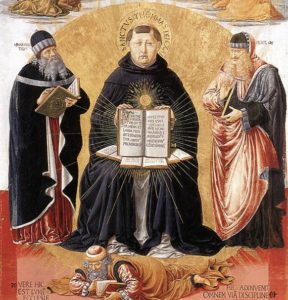
So it is that “heaven was opened” to express that the source of the power of Baptism is a heavenly source; that Baptism is the Sacrament of Faith and that by Faith the Faithful gaze on heavenly things, which surpass the senses and human reason; that the Kingdom of Heaven which was closed to the faithful by sin, is open to them by Baptism; and, that after Baptism, a man must pray in order to enter heaven for, although the way is open, he can only arrive there by prayer.
Lastly, it is reported that “the Holy Ghost descended in a bodily shape, as a dove” (Luk 3:22; see also Mat 3:16, Mar 1:10). According to St. Thomas, it was fitting that the Holy Ghost should appear in the form of a dove for four reasons (S.T. III, q. 39, a. 6, ad. 4):
First, on account of the disposition required in the one baptized—namely, that he approach in good faith: since as it is written (Wisdom 1:5): “The holy spirit of discipline will flee from the deceitful.” For the dove is an animal of a simple character, void of cunning and deceit: whence it is said (Matthew 10:16): “Be ye simple as doves.”
Secondly, in order to designate the seven gifts of the Holy Ghost, which are signified by the properties of the dove. For the dove dwells beside the running stream, in order that, on perceiving the hawk, it may plunge in and escape. This refers to the gift of wisdom, whereby the saints dwell beside the running waters of Holy Scripture, in order to escape the assaults of the devil. Again, the dove prefers the more choice seeds. This refers to the gift of knowledge, whereby the saints make choice of sound doctrines, with which they nourish themselves. Further, the dove feeds the brood of other birds. This refers to the gift of counsel, with which the saints, by teaching and example, feed men who have been the brood, i.e. imitators, of the devil. Again, the dove tears not with its beak. This refers to the gift of understanding, wherewith the saints do not rend sound doctrines, as heretics do. Again, the dove has no gall. This refers to the gift of piety, by reason of which the saints are free from unreasonable anger. Again, the dove builds its nest in the cleft of a rock. This refers to the gift of fortitude, wherewith the saints build their nest, i.e. take refuge and hope, in the death wounds of Christ, who is the Rock of strength. Lastly, the dove has a plaintive song. This refers to the gift of fear, wherewith the saints delight in bewailing sins.
Thirdly, the Holy Ghost appeared under the form of a dove on account of the proper effect of baptism, which is the remission of sins and reconciliation with God: for the dove is a gentle creature. Wherefore, as Chrysostom says, (Hom. xii in Matth.), “at the Deluge this creature appeared bearing an olive branch, and publishing the tidings of the universal peace of the whole world: and now again the dove appears at the baptism, pointing to our Deliverer.”
Fourthly, the Holy Ghost appeared over our Lord at His baptism in the form of a dove, in order to designate the common effect of baptism—namely, the building up of the unity of the Church. Hence it is written (Ephesians 5:25-27): “Christ delivered Himself up…that He might present…to Himself a glorious Church, not having spot or wrinkle, or any such thing…cleansing it by the laver of water in the word of life.” Therefore it was fitting that the Holy Ghost should appear at the baptism under the form of a dove, which is a creature both loving and gregarious. Wherefore also it is said of the Church (Canticles 6:8): “One is my dove.”
It is fitting, therefore, that the Holy Ghost appeared as a dove, for the dove signified the disposition one should have when receiving Baptism; the Gifts of the Holy Ghost which are first received in Baptism; the forgiveness of sins and reconciliation with God, and, lastly, the building up of the Mystical Body of Christ, the Church.
With the example of Our Lord’s Baptism presented on this day, and the explanation given by St. Thomas, the Faithful are invited to treasure as most precious what they have received in their Baptism, to give thanks to God for this great benefit He has freely bestowed, and to ponder these great mysteries in their hearts.
William Rock, FSSP was ordained in the fall of 2019 and is currently assigned to Regina Caeli Parish in Houston, TX.
January 13, 2023

Serenade to Our Lady of Guadalupe
Every nation has shown its love for the Mother of God in different ways: offering flowers, devotions, rosaries etc. But, Mexicans have developed a very peculiar way of expressing their love for the Mother of God, the serenade to the Guadalupana. Mexicans as a people like to sing, and it has always been a traditional custom to serenade loved ones, be it the mother, the wife, and…why not?…the Blessed Virgin of Guadalupe, Queen and Mother of the Mexican people.
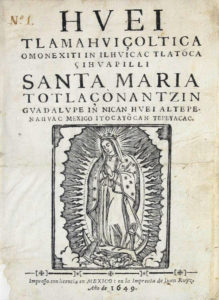 The origin and the date on which this tradition began is unknown, but there are records of non-liturgical songs that the indigenous people of Mexico sang to Our Lady of Guadalupe when they visited her house on hill of Tepeyac. Some of these songs dating from the 16th century were rediscovered by the San Antonio Vocal Arts Ensemble on their album “Guadalupe Virgen de los indios”, and they are a sign of the affection that was already felt for our Lady. Over the years it became customary to sing to our Lady of Guadalupe when she was visited at Tepeyac, but this custom was only in her Basilica in Mexico City where faithful and artists arrived on December 12 to honor her.
The origin and the date on which this tradition began is unknown, but there are records of non-liturgical songs that the indigenous people of Mexico sang to Our Lady of Guadalupe when they visited her house on hill of Tepeyac. Some of these songs dating from the 16th century were rediscovered by the San Antonio Vocal Arts Ensemble on their album “Guadalupe Virgen de los indios”, and they are a sign of the affection that was already felt for our Lady. Over the years it became customary to sing to our Lady of Guadalupe when she was visited at Tepeyac, but this custom was only in her Basilica in Mexico City where faithful and artists arrived on December 12 to honor her.
In 1932, the first live transmission of the mañanitas was made on the radio and in a more organized way. A microphone was placed at the entrance of the Basilica from where our Lady was serenaded, and it is at this point where the tradition began to extend to other parts of Mexico. The radio broadcasts were interrupted for some years and then resumed by Mr. Carlos Salinas Saucedo, who was the producer who started Las Mañanitas a la Virgen de Guadalupe on television live from the Basilica of Guadalupe and did so for 45 years from 1951 to 1997. With the first television transmission of the Mañanitas to the Guadalupana live from the Basilica of Guadalupe, this beautiful tradition spread throughout Mexico and the world.
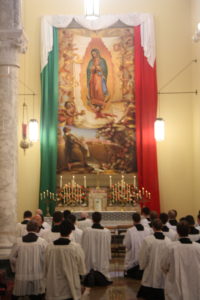
At the Seminary of Our Lady of Guadalupe, the feast of December 12 has always been a special day celebrated with solemnity. In 2012, this longstanding Mexican tradition was added to the communal celebrations when a group of seminarians approached Father Joseph Bisig, rector of the seminary, to request permission to decorate the altar of our Lady of Guadalupe for the feast and to be able to serenade her on December 11 at night.
That first year the serenade was a complete success. Seminarians went around collecting donations and the altar was able to be decorated with many roses and candles. Seminarians sang to our Lady in various languages, thus demonstrating the internationality of the Fraternity’s seminary. The following year, due to the success of the first serenade, Father Bisig gave permission for the serenade to be extended until midnight to receive December 12 singing to the Virgin of Guadalupe the traditional Mañanitas Tapatías.
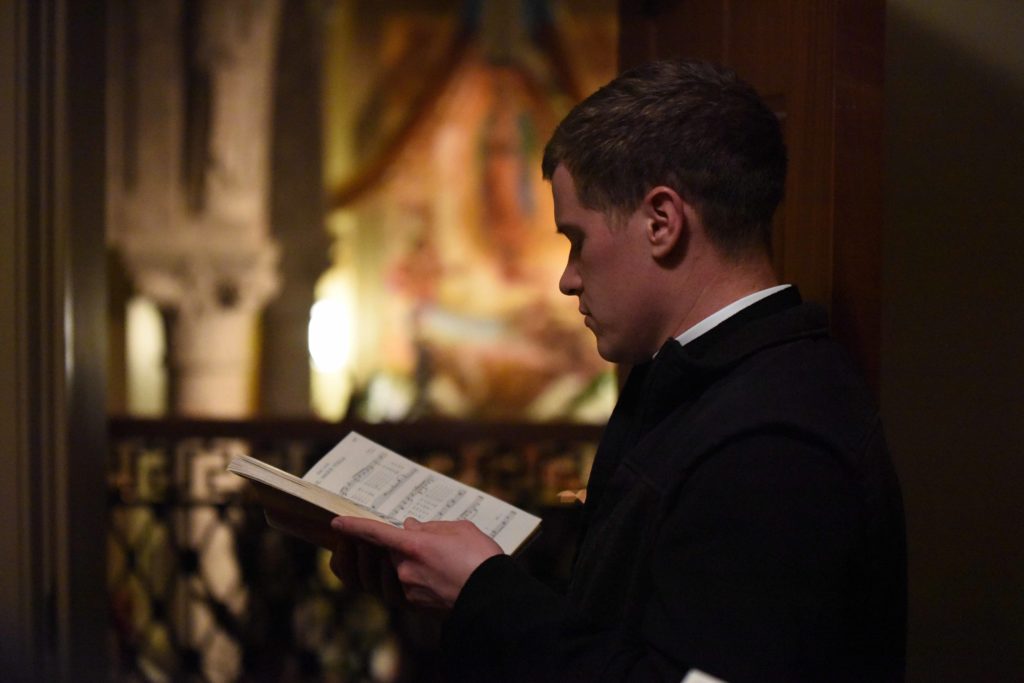 This was the humble beginning of this beautiful tradition to the Guadalupana in our seminary. Over the years the decorations have become more elaborate, and the tradition has become so dear and expected by our seminarians because with it they join the millions of Christians around the world who every December 11 express their love for the Morenita del Tepeyac, serenading her with hymns of praise and love.
This was the humble beginning of this beautiful tradition to the Guadalupana in our seminary. Over the years the decorations have become more elaborate, and the tradition has become so dear and expected by our seminarians because with it they join the millions of Christians around the world who every December 11 express their love for the Morenita del Tepeyac, serenading her with hymns of praise and love.
January 10, 2023

Death of Pope Emeritus Benedict XVI
Fribourg, December 31, 2022
It is with sorrow that the Priestly Fraternity of St. Peter learned today, December 31, 2022, of the death of Pope Emeritus Benedict XVI, who was on several occasions a providential support for our community. As Cardinal Prefect of the Congregation for the Doctrine of the Faith, he was instrumental in the founding of the Fraternity and even visited its seminary in Wigratzbad for Holy Week in 1990. After his election to the chair of Peter, the personal contact continued, especially with the private audience he granted to his founders and the Superior General on July 6, 2009: it was for us the occasion to thank him for the Motu Proprio Summorum Pontificum. A few months ago, from his place of retirement at the Mater Ecclesiæ monastery in the Vatican, he sent a private letter of encouragement to the Superior of the Fraternity of Saint Peter following the Motu Proprio Traditiones Custodes. The priests of the Fraternity, together with the faithful who are close to it, will be ardently praying for the repose of his soul. Requiem Masses with the absolution will be celebrated in the apostolates entrusted to the Fraternity in order to “pray to God that through the Sacrifice offered for the soul of his servant, the Sovereign Pontiff Benedict XVI, and after having raised him in this world to the papal office, he may be admitted into the celestial kingdom in the company of all the saints.” (secret of the Requiem Mass for a Sovereign Pontiff)
Source: www.fssp.org
December 31, 2022

Benjaminite Comites
by Fr. William Rock, FSSP
The three Feasts following Christmas – St. Stephen, St. John the Apostle, and the Holy Innocents – are known as the Comites Christi, that is, the “Companions of Christ,” as they are the first Saints on the liturgical calendar to attend, as it were, to the newborn Christ Child. These three feasts are also seen as representing the three forms of martyrdom. St. Stephen, the Protomartyr, was a martyr in desire and in act, St. John was a martyr in desire but not in act (he was miraculously saved when cast into boiling oil, which miracle resulted in his exile to the Island of Patmos),1 and the Holy Innocents were martyrs in act but not in desire. The liturgical colors traditionally assigned to each day reinforced this distinction – St. Stephen’s feast with red, St. John’s with white, and the Holy Innocents’ with violet.2 The importance of these feasts was also manifested in that each, in addition to Christmas, was celebrated with an octave. But there is another discernible theme running through these feasts and that is the Hebrew tribe of Benjamin.
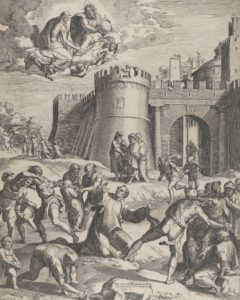
Depending on where the stoning of St. Stephen, the first martyr after the Resurrection, occurred, he may have been martyred in the territory of the tribe of Benjamin as the city of Jerusalem is divided between the territories of the tribes the Judah and Benjamin (Act 7:58). More clearly, the conversion of the Apostle Paul, of the tribe of Benjamin (Phil 3:5), is attributed, at least in part, to the prayers offered up by Stephen for those persecuting him (Act 7:59). For Paul was present and held the cloaks of those conducting the execution, thus consenting to it.
St. John can also be seen as having a connection to the tribe of Benjamin. But in order to understand this, it is important to recognize, as Dr. Brant Pitre explains in his Jesus and the Jewish Roots of Mary – Unveiling the Mother of the Messiah, that the person of Joseph, son of Jacob/Israel and Rachel, is a type or foreshadowing of Our Lord and Rachel of Our Lady. As Dr. Pitre spends an entire chapter explaining these connections, a full analysis cannot be presented here, but it is important to note that Joseph and Benjamin were brothers, the sons of Jacob/Israel and Rachel and that Rachel was the most-favored and most-beloved wife of Jacob. This is why Joseph was favored by Jacob above the rest of his brothers. He was the firstborn of Rachel, the most-beloved wife. Joseph, for his part, showed special love and affection for his only full-brother, Benjamin, the younger son of Rachel.

The Benjaminite connection with St. John the Apostle comes from his crucifixion account where Our Lord, the new Joseph, gives St. John to Our Lady, the new Rachel, as a second son. The second son of Rachel, as was stated, was Benjamin. Following the pattern, this would make St. John a new Benjamin. Dr. Pitre argues the St. John was aware of this as he never names himself in his Gospel, rather he calls himself the “disciple whom Jesus loved.” For in the Book of Deuteronomy (33:12), it is written that Benjamin is “beloved of the Lord.” Dr. Pitre’s position can be summarized as follows:
In order words, just as Benjamin was specially loved by Joseph because they were both sons of Rachel, so John is especially “loved” by Jesus because they have the same mother. Just as Joseph was the firstborn son of Rachel in the Old Testament, so Jesus is the firstborn son of Mary in the New Testament. And just as Benjamin was the “son” of Rachel’s “sorrow” [Rachel originally named her second son “Benoni, that is, the son of my sorrow: but his father called him Benjamin, that is, the son of my right hand” (Gen 35:18)], because she had to die to give birth to him, so John becomes the “son” of Mary’s sorrow, because Mary becomes his mother only through the anguish and “sorrow” that she experiences at the foot of the cross.3
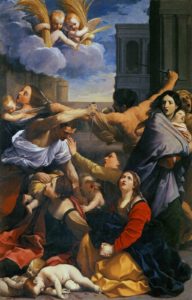
Finally, there are the Holy Innocents. The connection between the Holy Innocents and Benjamin is made explicitly by Scripture itself, for in their regard St. Matthew in his Gospel draws from this prophecy of Jeremias: “then was fulfilled that which was spoken by Jeremias the prophet, saying: A voice in Rama was heard, lamentation and great mourning; Rachel bewailing her children, and would not be comforted, because they are not” (Mat 2:17-18). This prophecy is applicable because Rachel “was buried in the highway that leadeth to Ephrata, this is Bethlehem” (35:19) and it was not just the babies in Bethlehem who were martyred, but also those “in all the borders thereof” (Mat 2:16), and Bethlehem, although in the territory of the tribe of Judah, is close by the territory of the tribe of Benjamin, whose mother was Rachel. As such, the horror ordered by Herod would have spilled over from the territory of the tribe of Judah into that of Benjamin also. The Roman Church recognizes the connection of the Holy Innocents with tribe of Benjamin by appointing the Church of St. Paul Outside the Walls as the Station Church for this feast. As stated above, St. Paul was of the tribe of Benjamin.
The question can now be asked, what is the purpose of the theme of Benjamin present in these feasts? In the first place, Benjamin, by association, brings to mind Joseph and Rachel. As such, these feasts shed light on the two major feasts between which the Comites fall. On Christmas Day, the beloved Son of the Father was born from the most-beloved Spouse of the Holy Ghost, the Blessed Virgin Mary, the new Rachel. This Son will be condemned by those to whom He desires to be close, as Joseph was, but, in the end, God, as He did with Joseph, will use the inflicted evil to save those who share in the guilt of the condemnation. Turning to the Octave Day of Christmas, it must be noted that the prophecy of Jeremias quoted in connection with the Holy Innocents was made centuries after Rachel’s death and gives witness to the belief that Rachel, although dead, was still aware of what was occurring in the land of the living and would intercede on behalf of the living. In fact, it was held that her intercession was greater than that of Moses and Abraham.4 As the new Rachel, it would be expected that Mary would also act as a maternal intercessor in heaven for those still on the earth. And this is what is found in the Collect and Postcommunion in the Mass for the Octave Day of Christmas. In these prayers, the Church invokes Mary’s intercession.
Secondly, it must be remembered that Benjamin means “son of my right hand.” In Sacred Scripture, the “right hand” is often a sign of strength or power (e.g., Ps 117:16). So, Benjamin could be understood to mean “son of my power.” Martyrdom, for its part, requires a special grace from God to undergo not only death in witnesses of the Faith, but also to endure without apostatizing the horrible tortures and pains which, in many cases, accompany the deathblow.5 In honoring the martyrs, then, Christians not only celebrated the witness provided by individual martyrs but also the victory won by Christ through them. As a special grace, a special strength, from God is needed to undergo martyrdom for the faith, each martyr can be seen as a “son of God’s power,” every martyr can be seen as a Benjamin of God. This may explain why the theme of Benjamin is present in these three feasts which represent the three types of martyrdoms.
William Rock, FSSP was ordained in the fall of 2019 and is currently assigned to Regina Caeli Parish in Houston, TX.
- Prior to the liturgical reforms of 1960, the Feast of St. John before the Latin Gate, which commemorated this attempted martyrdom, was observed on the universal Roman liturgical calendar as a major double on May 6th. While the feast is no longer observed, the Mass of this feast may be said on this day.
- For more information about these feasts see Guéranger, Prosper. The Liturgical Year, 2 (Christmas). Trans. Shepherd, Laurence. (Fitzwilliam: Loreto Publications, 2000).
- Pitre, Brant. Jesus and the Jewish Roots of Mary – Unveiling the Mother of the Messiah. (New York: Image Press, 2018), 177.
- Pitre, 168.
- For example, see Garrigou-Lagrange, Réginald. The Priest in Union with Christ. Part 3, Section 2, Chapter 3
December 26, 2022

FSSP Advent 2022 Photopost
As we wind down Advent this week and prepare ourselves for the joyous celebration of Christ’s birth, we share some Advent photos from various Fraternity apostolates in North America.
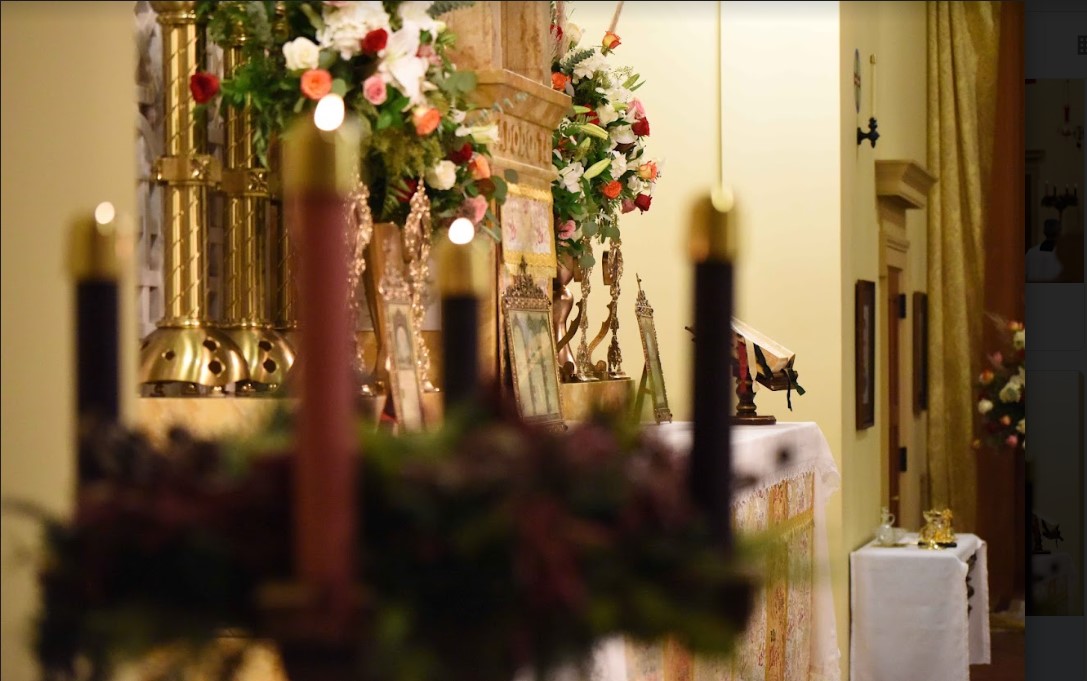
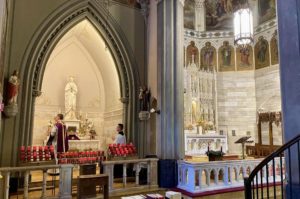


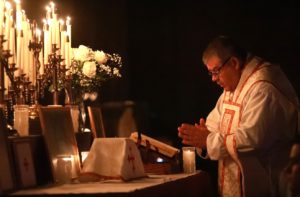
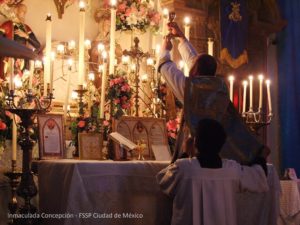

December 21, 2022




